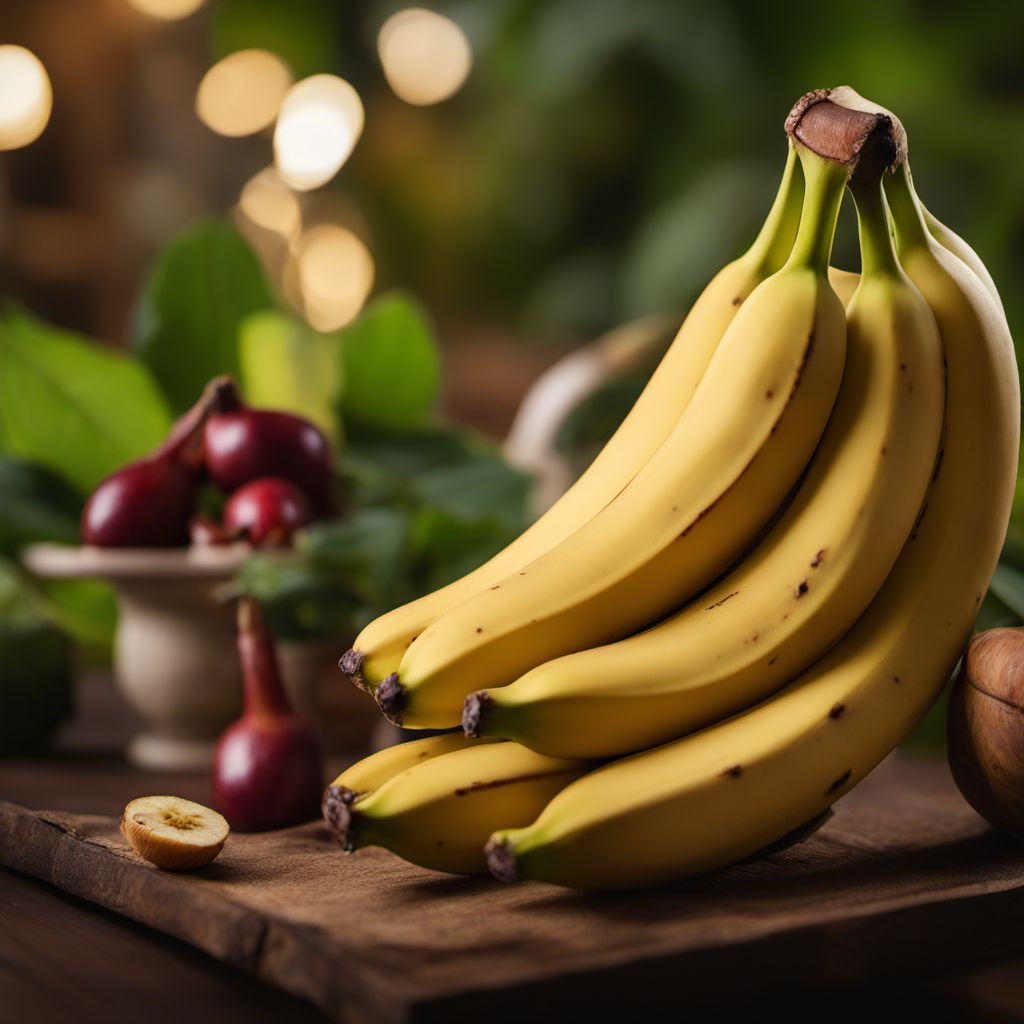
Ingredient
Common banana - acuminata cultivars
Nature's Sweet Delight
Bananas, specifically the common banana - acuminata cultivars, are elongated, curved fruits with a vibrant yellow peel that encases a soft, creamy flesh. They have a mild, sweet flavor with subtle tropical notes and a smooth, slightly firm texture. Bananas are widely used in both sweet and savory dishes, making them a versatile ingredient in various cuisines.
Origins and history
Bananas are believed to have originated in Southeast Asia and have been cultivated for thousands of years. They have a rich history and cultural significance in many tropical regions, where they are considered a symbol of fertility, prosperity, and good luck. Today, bananas are grown in numerous countries across the globe, with major producers including India, China, the Philippines, and Ecuador.
Nutritional information
Bananas are a nutrient-dense fruit, rich in essential vitamins and minerals. They are a good source of potassium, vitamin C, vitamin B6, and dietary fiber. Bananas are also relatively low in calories, making them a healthy snack option.
How to select
When selecting bananas, look for fruits that are firm, yet yield slightly to gentle pressure. Avoid bananas with bruises, blemishes, or signs of overripeness. The color of the peel can vary from green to yellow, depending on personal preference and ripeness. If you plan to consume bananas immediately, choose ripe ones with a vibrant yellow color and a few brown speckles. For longer storage, opt for slightly greener bananas that will ripen over time.
Storage recommendations
To extend the shelf life of bananas, store them at room temperature away from direct sunlight. Avoid placing them near other fruits, as they release ethylene gas, which can accelerate ripening. If you want to slow down the ripening process, store bananas in the refrigerator. However, note that the peel may darken, although the fruit inside remains unaffected.
How to produce
Bananas can be easily grown in tropical and subtropical regions. They require a warm climate, well-drained soil, and regular watering. Banana plants can be propagated from suckers or tissue culture, and with proper care, they can yield a bountiful harvest of this delicious fruit.
Preparation tips
Bananas can be enjoyed as a quick and nutritious snack on their own or incorporated into a wide range of dishes. They are commonly used in smoothies, milkshakes, and desserts like banana bread, cakes, and pies. Bananas can also be sliced and added to breakfast cereals, yogurt, or oatmeal for a natural sweetener. In savory dishes, they can be grilled, fried, or used in curries and stews to add a touch of sweetness.
Substitutions
Plantains can be used as a substitute for bananas in savory dishes, as they offer a similar texture and mild sweetness. However, plantains are starchier and less sweet than bananas when ripe. If a recipe calls for mashed bananas, applesauce can be used as a substitute to add moisture and sweetness. In some baking recipes, mashed avocado or pumpkin puree can replace bananas for a different flavor profile.
Culinary uses
Bananas are incredibly versatile and are used in a wide range of culinary creations. They are commonly used in baking, smoothies, milkshakes, ice cream, and fruit salads. In savory dishes, bananas are used in curries, stews, and as a topping for rice dishes. They can also be grilled or fried for a caramelized and flavorful addition to both sweet and savory dishes.
Availability
Bananas are widely available and cultivated in tropical and subtropical regions around the world. They are a common fruit in countries such as India, China, the Philippines, Ecuador, and Brazil. Bananas are also imported and consumed in large quantities in countries where they are not grown locally.
